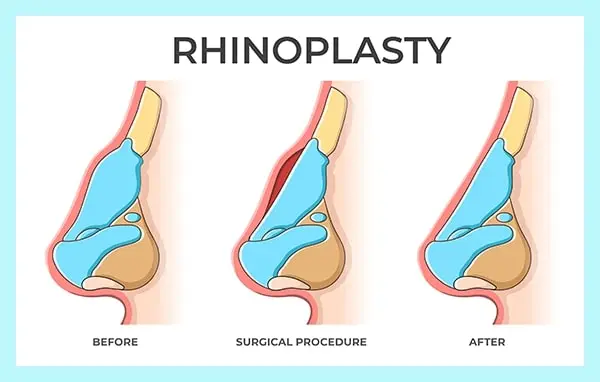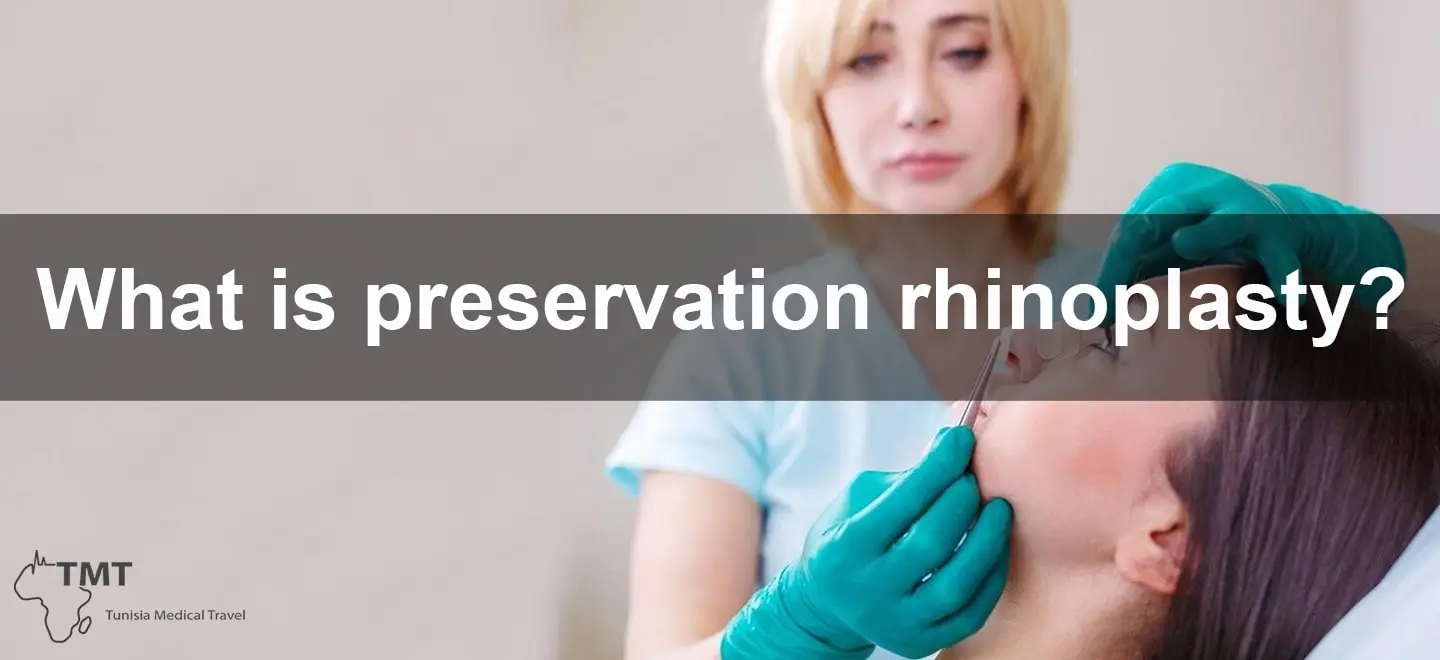What is preservation rhinoplasty?
What is preservation rhinoplasty?
What do people want from a modern rhinoplasty?
We live in an age of heightened personal expectations, where a vast range of interpersonal and commercial activities promise to identify and satisfy those individual expectations. When the researcher’s patients are asked about their own personal expectations for the outcome of a modern rhinoplasty procedure, a wide range of responses are generally received, reflecting different cultural, sexual, age, and ethnic background. However, in broad terms, all patients seem to demand the same things. Obviously, they want an aesthetic improvement, a nose which is in balance with the other facial features and especially, a well-defined and stable nasal tip. What’s interesting, it’s very rare for one patients to mention one of the traditional aims of rhinoplasty surgery, that is, an improvement in nasal airways and breathing through the nose. Nevertheless, it’s now over 100 years since the very first successful rhinoplasty procedure was carried out to correct a nasal disfigurement arising from an injury and it’s very clear that the vast majority of people undergoing a modern rhinoplasty expect the best possible cosmetic result. The interesting thing is that a modern, so-called « preservation rhinoplasty » approach to the surgery recognizes that what’s taken away by the surgeon is just as important as what’s left behind. And a recent academic review has suggested that by maintaining an intact, underlying nasal architecture and using an open structured technique, it is possible to achieve a measurable advantage in long-term cosmetic results as opposed to the more traditional « closing-wedge » or « scarf » type methods, which tend to distort and weaken the nasal tip support over time.
Why did older rhinoplasties work out so badly?
There are many reasons older rhinoplasties might have turned out terribly. The more experienced surgeons throughout the entire existence of rhinoplasty have seen many styles and patterns go back and forth. Yet, a few specialists began to see that numerous patients do not turn out positively after their rhinoplasty. So in the course of the most recent couple of many years, a few specialists have been given the idea of « auxiliary rhinoplasty » – a second rhinoplasty for the most part to fix the slip-ups of the principal rhinoplasty. Some of the time this should be possible as an outpatient. Other auxiliary rhinoplasties are significant tasks that require mending and recuperation for the time of time. For example, half a month to a few months, contingent upon what should have been finished. After a great deal of this work and from concentrates in the course of recent years, specialists have started to understand the variables that really lead to an awful rhinoplasty. One of the principal reasons is the cruel truth that for various years there weren’t generally formal preparing programs for rhinoplasty. The actual term « plastic medical procedure » was created in the 1930s. The principal rhinoplasty was done around 1900, and it quit being something strange during the 1960s. Be that as it may, the possibility of a particularly field was truly new and there was not actually a characterized educational program set up for any specialist preparing. Rather, specialists sort of mastered a tad of rhinoplasty all over through experiences in their overall medical procedure or an ear, nose, and throat preparing program. Additionally, rhinoplasty was not considered as a different and particular technique – it was a side interest, a continuation, of fields like general medical procedure or an otolaryngology.

What should I know before choosing a rhinoplasty specialist?
Choosing a rhinoplasty specialist is a consultant process. And just because a doctor is a specialist in plastic surgery, it doesn’t mean that he is an expert in rhinoplasty. Some of these doctors may not have special expertise in nasal surgery. You need to check the specialist’s knowledge and experience in preservation rhinoplasty. The rhinoplasty journey is consisted of a few steps. The first step is to meet your family doctor to get professional advice and explanation. A family doctor may have an idea of why you want a nose job. He or she can also help you to point out the problems related to your nose and overall health. In particular, your doctor can help us identify whether the nasal obstruction is caused by a deviated nasal septum or turbinates hypertrophy. Nasal septum may deviate to one side as a result of the nose being knocked or it is a problem from birth. It may cause nasal septal deviation which is the displacement of the nasal septum. This is very important because repairs of the deviated septum and reduction of the turbinates can produce a positive effect on the nasal airway and this may solve the obstructive sleep apnea problem. The doctor should not be a consultant, but be a specialist in the nose. A consultant is a doctor who provides advice or further treatment. A specialist is a doctor who is more expert than a consultant and concentrates more in a particular field. On the General Medical Council’s register, a specialist in rhinoplasty is also listed as « Rhinology ». So, it’s important to know whether the doctor is listed as a « Rhinologist ». « Rhinologist » means a specialist in the nose and nasal problems. However, in the UK, many general professional doctors who perform surgery, including rhinoplasty, will be in « The specialist register in plastic surgery », as well as the Royal College of Surgeons of Edinburgh, England or Glasgow. If a doctor is listed as a « Rhinologist », it means that he has a very high level of capability and experience in nose surgery and its problems. In addition, the doctor should possess the skills. Ask the specialist about his experience and training in preservation rhinoplasty and discuss what technique would be best for your particular problem. Also, vanity should not be the sole motivator for getting a nose job. A patient should be seeking to improve something for themselves because they want to improve it, not to meet someone else’s goals. Next, get to know how the particular technique works. A preservation rhinoplasty involves the careful work around the natural structures of the nose like cartilages and bone, as opposed to removing and discarding certain tissues. It aims to minimize the trauma and the poor healing process that can result in scarring, skin shriveling, and long-term nasal obstructive problems. I look for a doctor who is able to use the modern technology of rhinoplasty such as the « Ultrasonic Rhinoplasty », which is a kind of preservation rhinoplasty using ultrasonic to redefine the nasal bone or to trim the cartilages. There are different kinds of ultrasonic rhinoplasty digitized the cartilage reduction, the lateral osteotomy, and the medial repositioning of the nasal bones. Such methods of preservation rhinoplasty provide a high level of efficiency and safety, but there are few specialists in the world who have the expertise to perform that – so one must be very selective.
What is the philosophy at Rhinoplasty?
It is broadly agreed that the philosophy of preservation rhinoplasty is about maintaining the pre-existing anatomy and functioning of the nose as far as possible. Work that can be traced to this philosophy began in the early 20th century when surgeons were trying to correct the ‘crooked’ nose as a result of trauma. Using the available techniques at that time, such as removal of cartilage and bone, it was difficult to make much difference to the appearance of the nose if the nose formed within cartilage and bone was removed. However, over the last 15 years with the development of more modern and less traumatic techniques, the philosophy of preservation has become a term applicable not only to ‘large’ noses in the context of a ‘crooked’ nose, but also to all noses undergoing any form of rhinoplasty. These days we have at our disposal not only a better understanding of nasal anatomy and physiology but also much finer instruments and magnification technologies that can aid nasal surgery. This is particularly important in the context of modern rhinoplasty where there has been a shift to a more conservative approach and where the philosophy of preserving the anatomy and function of the nose is paramount. It is important to realise that preservation does not mean ‘non-intervention’ and a modern definition of preservation rhinoplasty would be ‘techniques designed to give the best aesthetic outcome with the least amount of trauma and alteration to structure’. Modern rhinoplasty, including preservation rhinoplasty, is premised on some fundamental principles. Rhinoplasty is neither simple nor easy to learn and it still remains as the most difficult of all cosmetic surgeries. It requires a deep understanding of the normal nasal anatomy and the physiology of wound healing and cartilage and bone behaviour. Also, the best surgeons who produce consistently good aesthetic results, whether they use preservation techniques or not, are those who never lose sight of the principal that successful rhinoplasty results in high levels of patient satisfaction. Critical to these high levels of patient satisfaction is the understanding that both structure and function of the nose are intricately linked because altering the structure of the nose e.g. form has a direct impact on its function e.g. air flow.

